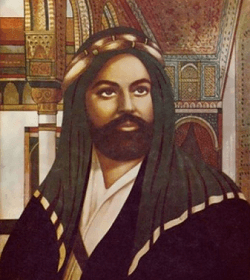A Journey into Islamic History
Explore the fascinating Prophet Muhammad’s Travel Routes, delving into Islamic history and the significance of these journeys. Join us on this captivating journey as we unveil the paths traveled by the Prophet, shedding light on their historical context and spiritual importance. Discover the rich tapestry of Prophet Muhammad’s travels and the impact they had on shaping Islamic history.
Prophet Muhammad, the founder of Islam, embarked on various journeys throughout his life. These travels played a pivotal role in spreading the message of Islam, establishing essential alliances, and shaping the Islamic civilization that followed. In this article, we will delve into Prophet Muhammad’s travel routes, unraveling their historical significance and exploring the destinations he visited. Join us on this captivating journey into Islamic history, as we discover the paths traveled by the Prophet and the profound impact they had.
Prophet Muhammad Travel Routes: A Journey into Islamic History
Prophet Muhammad’s travels spanned different life periods, each holding its own significance. Let us now explore these remarkable travel routes and understand their historical and spiritual importance.
1. Mecca to Medina: The Hijrah
The journey from Mecca to Medina, known as the Hijrah, holds immense historical significance in Islamic history. It marked the migration of Prophet Muhammad and his followers from Mecca to Medina in 622 CE. This migration not only provided a safe haven for Muslims but also served as a turning point in the establishment of the first Islamic state. The Hijrah marks the beginning of the Islamic lunar calendar and is celebrated as a major event in the Islamic calendar.
2. The Battle of Badr: A Pivotal Encounter
The Battle of Badr is special in Islamic history, and Prophet Muhammad played a crucial role in this conflict. Located near Medina, this battle took place in 624 CE between the Muslims of Medina and the Quraysh tribe of Mecca. Despite being outnumbered, the Muslims emerged victorious, solidifying their position and establishing their strength. The Battle of Badr is considered a milestone in the spread of Islam and Prophet Muhammad’s leadership.
3. The Treaty of Hudaybiyyah: Diplomacy Prevails
The Treaty of Hudaybiyyah, signed in 628 CE, showcases the diplomatic skills of Prophet Muhammad. This treaty was a pivotal moment in Islamic history as it allowed for temporary peace between the Muslims and the Quraysh tribe of Mecca. Prophet Muhammad agreed to a ten-year truce, which led to an environment of peace and allowed Islam to flourish. The Treaty of Hudaybiyyah exemplifies Prophet Muhammad’s ability to negotiate and maintain peaceful relations.
4. The Farewell Pilgrimage: A Spiritual Culmination
In 632 CE, Prophet Muhammad undertook the Farewell Pilgrimage, which holds great significance in the Islamic faith. It was during this pilgrimage that the Prophet delivered his final sermon, known as the Farewell Sermon, to the Muslim community. The sermon emphasized unity, equality, and the importance of adhering to the teachings of Islam. This pilgrimage marked the culmination of Prophet Muhammad’s prophetic mission and holds immense spiritual value for Muslims worldwide.
5. Journeys to Spread the Message
Throughout his life, Prophet Muhammad embarked on several journeys to spread the message of Islam. These journeys took him to various cities and tribes, allowing him to convey the teachings of Islam and establish alliances. Some notable destinations include Ta’if, where the Prophet sought support and faced challenges, and the city of Tabuk, where he led an expedition to confront the Byzantine Empire. These journeys played a crucial role in expanding the influence of Islam beyond Arabia.
6. Consolidating the Islamic State
Prophet Muhammad’s travel routes also involved visits to regions under Islamic rule, aimed at consolidating the newly formed Islamic state. These journeys included visits to cities like Mecca and Jerusalem, where the Prophet established Islamic authority and spread the teachings of Islam. His visit to Jerusalem, known as the Night Journey, holds great significance as it is believed that the Prophet ascended to the heavens from the Al-Aqsa Mosque during this event.
Conclusion
Prophet Muhammad travel routes offer a captivating glimpse into Islamic history, showcasing the journeys undertaken by the Prophet and their profound impact. From the Hijrah to the Battle of Badr, each route holds immense historical and spiritual significance. These journeys played a crucial role in shaping the Islamic civilization and spreading the message of Islam. By exploring Prophet Muhammad’s travel routes, we gain a deeper understanding of the foundations and teachings of Islam. Let us embrace this journey into Islamic history, appreciating the legacy left behind by Prophet Muhammad and the transformative power of his travels.
FAQs:
Prophet Muhammad travel routes
1. Q: Why are Prophet Muhammad travel routes important?
– Prophet Muhammad’s travel routes are essential as they played a vital role in spreading the message of Islam, establishing alliances, and shaping the Islamic civilization.
2. Q: What was the significance of the Hijrah?
– The Hijrah marked the migration of Prophet Muhammad from Mecca to Medina and served as a turning point in the establishment of the first Islamic state.
3. Q: What was the outcome of the Battle of Badr?
– Despite being outnumbered, the Muslims emerged victorious in the Battle of Badr, establishing their strength and solidifying their position.
4. Q: What was the importance of the Treaty of Hudaybiyyah?
– The Treaty of Hudaybiyyah allowed for a temporary peace between the Muslims and the Quraysh tribe, creating an environment of peace and allowing Islam to flourish.
5. Q: What is the significance of the Farewell Pilgrimage?
– The Farewell Pilgrimage marks the culmination of Prophet Muhammad’s prophetic mission and holds immense spiritual value for Muslims.
6. Q: How did Prophet Muhammad’s journeys contribute to the spread of Islam?
– Prophet Muhammad’s journeys allowed him to spread the message of Islam to different cities and tribes, expanding the influence of Islam beyond Arabia.



